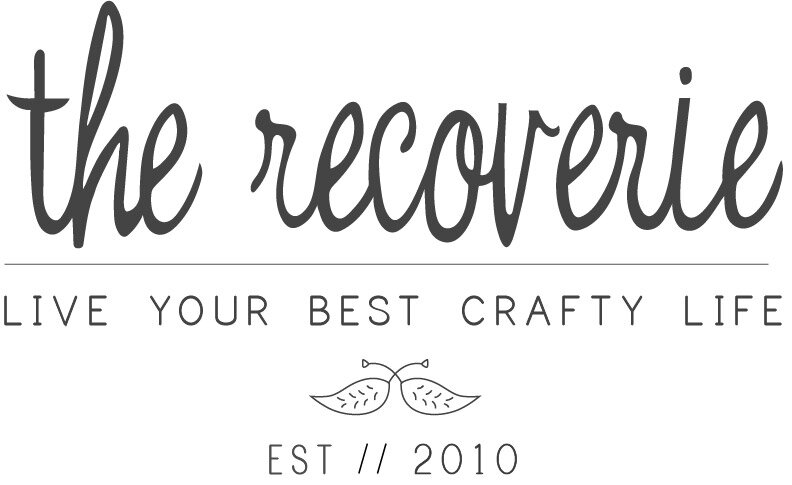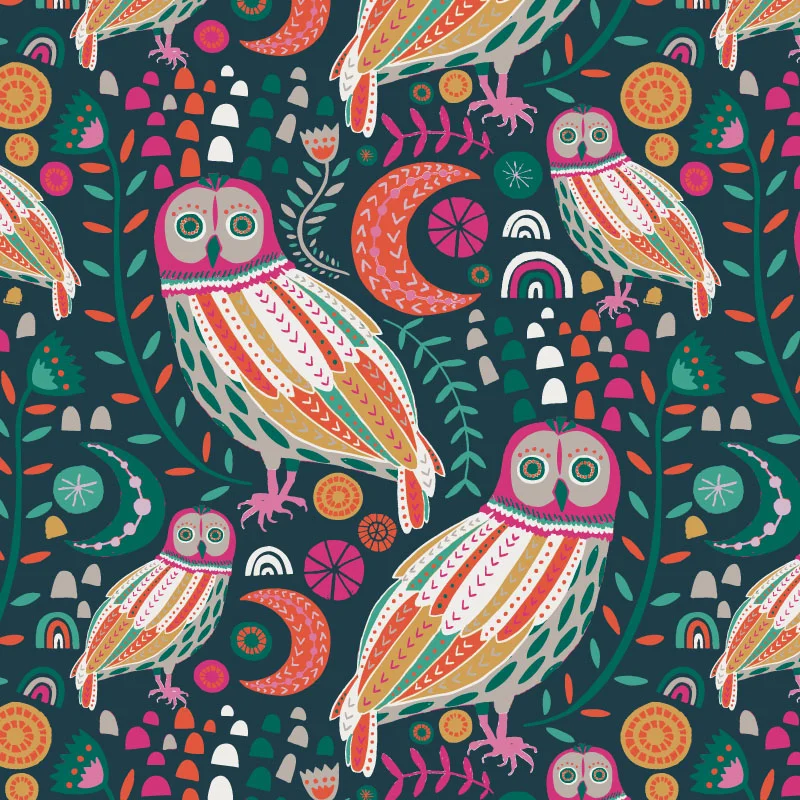Featured Artist: Jessica Swift , Painter and Surface Pattern Designer
As a creative business owner, I often stress the importance of surrounding yourself with other types of artists. It’s good to create an inspiring community around you that will keep you moving when you start to doubt yourself.
Whenever I get stuck or discouraged, I just reach out to one of these artist friends, (or make a point to go meet a new one!) and immediately get excited to get back to work!
Today we are meeting Jessica Swift, an all around talented design guru. Jessica is from Boulder, Colorado and currently lives in the Pacific Northwest in Portland, Oregon, working as a surface pattern designer.
She has dipped her toes in quite a few areas in the art field (a true creative) and has a lot we can learn from!
So without further ado, here’s Jessica:
Tell us a little about your background and what you design.
I am a surface pattern designer, painter, and teacher of online classes. I went to Ithaca College, a liberal arts school, and got a Bachelor of Fine Arts degree in painting. I didn't study surface design, textile design, illustration, or anything like that in school. In fact, I barely even knew how to use a computer when I graduated!
Currently I design fabric for Art Gallery Fabrics, license my patterns, paintings, and illustrations for other types of products like stationery, wall art, calendars, rugs, and more, create paintings and products that I sell in my own online shop, teach pattern design classes on Skillshare, and run a private membership group for creatives called Campfire.
For better or for worse, my career has been one of following what interests me and winging it, figuring things out as I go. I haven't had much of a plan or strategy other than following my heart, doing what feels right, and adjusting course as I go.
How did you come to start a business and how did you end up in surface pattern design?
I started my business selling paintings at juried outdoor art festivals in 2003, working out of my studio in Boulder, Colorado (my hometown). My mom had given me a flyer for the show that she saw and gave it to me, thinking I might be interested.
I only had a handful of paintings completed at that point and had no real business entering the show, but for some reason it called to me, so I entered with images of the few paintings I had. And I got in! It was a huge shock.
I painted furiously for several months until the show weekend came, put together a booth (having no idea what a booth was really supposed to look like), and hoped for the best.
The weekend of the show was incredible. I sold dozens of paintings, got tons of great feedback about my work, and was surrounded by people making a living selling their artwork.
I was so inspired and felt so confident! I officially opened my business the following week and sold my work that way and directly from my studio for the next 4 years.
In 2007 I discovered surface pattern design through design blogs and immediately became obsessed with the idea of learning to create repeating patterns. It was a long road to teaching myself to use Illustrator, and it took over a year until I created my first successfully repeating pattern. But once I figured it out I was off and running! I knew it was the path for me.
I became quickly obsessed with pattern design and created as many patterns as I could, improving my skills and loving the design process. I was so inspired! All I could think about was how I wanted my own designs on products the way I saw other artists doing.
I didn't know that surface design was a career choice that I could've made or gone to art school for... I remember thinking "why didn't anyone tell me??!" Ha. But we arrive where we're supposed to be when and how we're supposed to get there. So 2008 was my time to arrive at becoming a surface designer!
What's your process like when you start a new design? What programs do you like using?
I use Illustrator to create all my repeating patterns. These days I typically draw my motifs on my iPad Pro using an app called Procreate. Then I transfer them onto my desktop computer and color and arrange the motifs in Illustrator.
I don't often have a plan in place for what I want to design; I just start drawing and see what comes. I never really have much of a plan in the beginning in general in my creative process!
Do you prefer working by hand, or on the computer?
I don't think I prefer one over the other; I love both ways of working for different reasons. I can sink into working on the computer and working with my hands in different ways... the ways I focus within each type of process is different. I like being able to do both.
How did you get into licensing your work? Do you have any tips for other artists wanting to go that route?
My first licensing job really sort-of fell into my lap. It was at the end of 2008, and I'd been busy designing patterns and putting them on the internet however I could. Flickr was a big place for sharing work at the time, and that's ultimately where an art director found my work and thought of me for a project she was working on for T-Mobile.
I ended up licensing 3 designs to T-Mobile for cell phone cases and accessories, and it was thrilling. I was hooked. It was amazing to see my designs in stores and I wanted more of that!
I would advise artists wanting to go that route to make a lot of artwork! Also, to be proactive in researching companies that would be a good fit for their work and in reaching out to them. Doing your research and being persistent can really pay off!
Having a professional online presence is very important. For example, it's important to have an online portfolio that's on a dedicated website rather than just an Instagram account or Facebook page.
Start an email list for potential clients and gather names/email addresses that you'd like to put on it (art directors, buyers, etc). (Make sure to ask them before you add their email address, though!)
Then send periodic emails to that list sharing new artwork you've been working on. You never know what an art director or buyer might be looking for!
Have you ever exhibited at a trade show? If so, how was that experience?
I've exhibited at Printsource (2009) once and at Surtex 3 times (2010, 2011, 2014). I learned a lot each time and made some great contacts at each show. The last time I exhibited at Surtex was definitely the best and I had a few great contracts come from that show.
Trade shows are all about the follow-up; taking meticulous notes while there on who you talked to, what images they've requested you send them, etc, is vital. That was very important in making the shows successful for me. There's nothing like meeting with people face to face; that's one part of exhibiting at the shows that I loved.
Overall my experiences were really positive and I'd like to exhibit at trade shows again at some point in the future when it makes sense for me.
What are your thoughts on being a self taught surface pattern designer? Do you think it's made a difference in your style/process?
I think in some ways I might feel more creative freedom than some artists who were trained professionally in surface design... since I never learned "the rules"; I kind-of made up my own rules in a lot of ways and developed my own way of creating patterns that works for me.
The only thing I have to compare it to is coming out of college with a degree in painting and having a lot of "shoulds" in my mind that I got from professors – how I should paint, what I should paint, etc.
I had to unlearn many of these things over the years after college because they were hampering my creativity and holding me back. So I'm glad I didn't have that experience with surface design!
<<>>
Thanks Jessica for chatting with us and teaching us a little about your world!
You can find more about Jessica and her work here!











